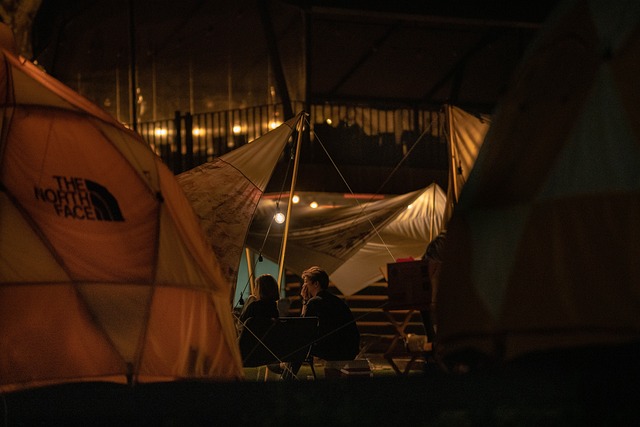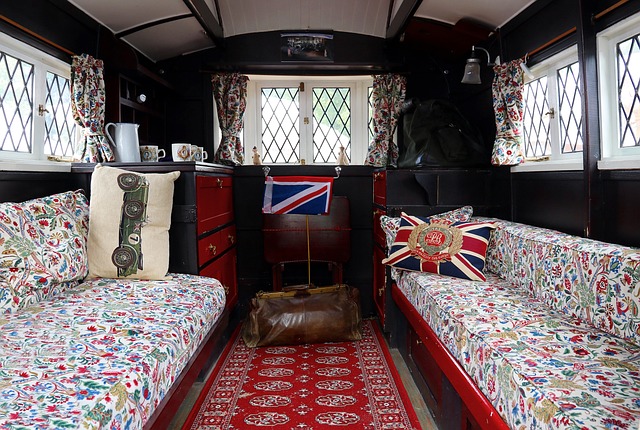When selecting a flashlight for camping or outdoor activities, it's crucial to consider the reliability and performance of its power source, as well as its durability under various conditions. High-quality batteries with a long shelf life, such as reputable alkaline or rechargeable lithium-ion varieties, are recommended to ensure consistent performance. Employing smart settings on your flashlight can further conserve battery life by adjusting brightness automatically. Regular maintenance practices like storing the flashlight in cool and dry conditions and detaching batteries when not in use will also help maintain its efficiency. Flashlights for camping and outdoor activities should be complemented with accessories like waterproof cases, lens protectors, and adjustable focus options to enhance their versatility and reliability in diverse environments. For added convenience, USB charging capabilities can be integrated, allowing recharging through various sources such as power banks or solar panels. By incorporating these features, your flashlight becomes a vital tool for any outdoor enthusiast, providing essential light and functionality for safe navigation and practical tasks during camping trips or other outdoor adventures.
When venturing into the great outdoors, reliable lighting is a must-have for any outdoor enthusiast. This article delves into the power sources that fuel our expeditions, focusing on flashlights for camping and outdoor activities. From the efficiency of rechargeable batteries to the boundless energy of solar charging, we’ll explore the best options to keep your path illuminated. Understanding the pros and cons of various battery types and the integration of solar technology into flashlight design are key to enhancing your outdoor experience. We’ll also cover strategies to maximize battery life, ensuring your light source remains a dependable companion on your adventures. Join us as we shed light on the power sources that light up the wilderness.
- Evaluating Power Options for Outdoor Adventures: Understanding the Pros and Cons of Different Batteries and Solar Charging
- The Role of High-Quality Flashlights in Camping: Key Features to Look For
- Rechargeable Battery Technologies for Flashlights: Lithium-Ion vs. NiMH
- Solar-Powered Flashlights: Harnessing the Sun's Energy for Illumination on the Trail
- Strategies for Maximizing Battery Life in Your Camping Flashlight
- Accessories and Add-Ons: Enhancing Your Flashlight's Versatility and Reliability for Outdoor Use
Evaluating Power Options for Outdoor Adventures: Understanding the Pros and Cons of Different Batteries and Solar Charging

When embarking on outdoor adventures, having a reliable power source is crucial for ensuring safety and comfort. Flashlights for camping and outdoor activities are essential tools that require a steady power supply to illuminate the path or signal for help. Among the various power options available, understanding the pros and cons of different batteries and solar charging is pivotal for making an informed decision.
Alkaline batteries have long been the go-to choice for many due to their affordability and availability. They offer a dependable power source with a steady output, suitable for low to moderate drain devices like basic flashlights. However, their lifespan is limited once depleted, and they are not as efficient in colder temperatures compared to their rechargeable counterparts. Rechargeable batteries, particularly lithium-ion varieties, present a more sustainable option. They hold a higher energy density, can be reused numerous times, and maintain performance across a wider range of temperatures. Nevertheless, the initial cost is higher, and they require careful handling to avoid overcharging or damage.
Solar charging emerges as an eco-friendly alternative, harnessing the power of the sun to replenish energy. Portable solar panels can be integrated with devices or used in conjunction with battery packs. This method is environmentally benign and virtually unlimited in supply. However, it is dependent on sunlight, which may not always be available, especially during long nights, cloudy weather, or seasons with shorter daylight hours. Additionally, the efficiency of solar charging can vary based on the panel’s quality and the intensity of sunlight. For outdoor enthusiasts, a combination of battery types and solar charging might offer the most versatile and sustainable power solution, ensuring that their flashlights and other electronic devices remain operational, regardless of the conditions they face.
The Role of High-Quality Flashlights in Camping: Key Features to Look For

High-quality flashlights play a pivotal role in enhancing the safety and experience of outdoor enthusiasts, especially during camping trips. A reliable flashlight for camping isn’t just a tool; it’s an essential companion that can make the difference between a pleasant journey and a potentially hazardous situation. When venturing into the great outdoors, visibility is paramount, and a robust flashlight can provide the necessary illumination to navigate unfamiliar terrains, set up camp, or signal for help if necessary.
When selecting a flashlight for camping and outdoor activities, consider several key features that contribute to its effectiveness and durability. Firstly, lumens output is crucial; a higher lumen flashlight will cast a brighter beam, which is beneficial for long-distance illumination or when working in low-light conditions. Additionally, the beam type—whether flood or spot—can affect how light is dispersed, with flood beams providing wider illumination suitable for close tasks and spot beams allowing for distant object identification.
Durability is another significant aspect to consider; a flashlight must withstand the elements and rough handling. Materials such as aircraft-grade aluminum or high-impact polymer can offer both sturdiness and lightweight portability. Impact resistance, waterproofing to at least IPX8 standards, and a reliable battery system are non-negotiable for ensuring that your flashlight functions when you need it most. Furthermore, features like adjustable brightness settings, a durable design with a non-slip grip, and a user-replaceable battery can greatly enhance the flashlight’s utility in various outdoor scenarios.
Flashlights designed specifically for camping and outdoor activities often incorporate these features, making them indispensable tools for any adventure. Investing in a high-quality flashlight not only ensures safety but also provides peace of mind, allowing you to fully enjoy the wonders of nature under the illumination of reliable, powerful light.
Rechargeable Battery Technologies for Flashlights: Lithium-Ion vs. NiMH

When venturing into the great outdoors, reliability and durability of your equipment are paramount. Flashlights for camping and outdoor activities must be equipped with robust power sources to ensure they function when needed most. Rechargeable battery technologies have advanced significantly, offering two primary options for outdoor enthusiasts: Lithium-Ion (Li-ion) and Nickel-Metal Hydride (NiMH).
Lithium-Ion batteries have become the gold standard in rechargeables due to their high energy density, which translates to longer run times and brighter light outputs. They are lighter than NiMH batteries, making them an ideal choice for those who prioritize portability without sacrificing performance. Li-ion batteries also maintain their charge well over time, meaning the light you rely on can be ready when you need it, even after periods of non-use. Their ability to handle a large number of charge cycles makes them a sustainable option for frequent users.
NiMH batteries, on the other hand, are known for their ability to operate in colder temperatures, which can be a deciding factor for those who camp or hike in low-temperature environments. They also tend to be more affordable and environmentally friendly at the end of their lifecycle. However, they typically do not match the energy density of Li-Ion batteries, resulting in shorter run times and potentially less powerful illumination. Still, for those who value reliability and sustainability in extreme conditions, NiMH batteries can be a suitable choice for flashlights used in camping and outdoor activities. When selecting between Lithium-Ion and NiMH rechargeables for your flashlight needs, consider the specific demands of your outdoor adventures and choose accordingly to ensure you have a dependable light source.
Solar-Powered Flashlights: Harnessing the Sun's Energy for Illumination on the Trail

When embarking on outdoor excursions, the reliability of a power source is paramount. Solar-powered flashlights represent a sustainable and eco-friendly solution for illumination during camping trips or trail adventures. These devices harness the power of the sun, a plentiful resource in most environments, to provide a steady beam of light when the natural light fades. Unlike traditional batteries, which may require frequent replacements or be subject to depletion, especially in colder conditions, solar-powered flashlights offer an enduring light source that recharges itself during daylight hours. This not only reduces the need for disposable batteries but also minimizes the environmental impact associated with their production and disposal.
Choosing a solar-powered flashlight for camping and outdoor activities ensures that enthusiasts have a dependable tool to navigate the wilderness safely. These flashlights are designed with durability in mind, often featuring waterproof and shock-resistant properties, making them suitable for various terrains and weather conditions. The efficiency of these devices means that even a small amount of sunlight can power them throughout the night, providing an adequate amount of light for tasks like setting up camp, reading maps, or simply enjoying the evening outdoors. With models available in different sizes and with varying light intensities, outdoor enthusiasts can select the perfect solar-powered flashlight to meet their specific needs, ensuring that the trail is well-lit and the adventure is unhampered by power constraints.
Strategies for Maximizing Battery Life in Your Camping Flashlight

When embarking on camping or outdoor adventures, having a reliable flashlight is paramount. To maximize battery life in your flashlight for camping and outdoor activities, consider several key strategies. Firstly, opt for high-quality batteries with a long shelf life; brand-name alkaline or rechargeable lithium-ion cells offer superior performance over generic alternatives. Secondly, employ smart settings that automatically adjust brightness levels based on the environment, conserving power when full illumination isn’t necessary.
Additionally, regular maintenance is crucial for prolonging battery life. Store your flashlights with fresh batteries in a cool, dry place, and remove batteries when not in use to prevent self-discharge. Investing in flashlights designed with power-saving features, such as energy-efficient LED technology, will further enhance the longevity of your light source. By following these practices, you can ensure that your camping flashlight serves you well throughout your outdoor excursions, illuminating your path without fail.
Accessories and Add-Ons: Enhancing Your Flashlight's Versatility and Reliability for Outdoor Use

When venturing into the great outdoors, having a reliable light source is paramount for safety and functionality. Flashlights designed for camping and outdoor activities are not just about illumination; they’re about versatility and reliability in various conditions. To enhance your flashlight’s capabilities, consider adding accessories that cater to specific needs. For instance, a durable waterproof case can protect your flashlight from the elements, ensuring it remains operational even when submerged. Similarly, a high-quality lens protector will safeguard the light’s lens from scratches and debris, maintaining clarity for nighttime navigation or signaling.
For those who frequently use their flashlights in different environments, accessories like adjustable focus options can be invaluable. This feature allows you to switch between a wide beam for area lighting, ideal for camping, and a narrow, intense beam for long-distance signaling or close-up tasks like reading a map. Additionally, integrating a USB charging port into your flashlight setup means you can recharge it using a power bank or solar panel, which are staples in the outdoor enthusiast’s kit. This not only adds convenience but also increases the flashlight’s utility when traditional batteries might fail. With these add-ons, your flashlight for camping and outdoor activities becomes an even more indispensable tool, ready to meet the demands of any wilderness adventure.
When venturing into the great outdoors, reliable lighting is paramount. This exploration of power sources for outdoor enthusiasts has illuminated the importance of selecting flashlights designed specifically for camping and outdoor activities, taking into account battery life, rechargeable technology, and solar energy potential. Whether you’re a seasoned hiker or an amateur camper, understanding the nuances between lithium-ion and NiMH batteries, and the benefits of solar-powered flashlights, will ensure your adventures are well-lit without compromising on portability or performance. By prioritizing key features in a high-quality flashlight and utilizing accessories to extend battery life, you can enhance both safety and enjoyment during your time spent under the stars. As daylight fades into night, trust that your flashlight will guide your way, providing reliable illumination in harmony with nature’s elements.
